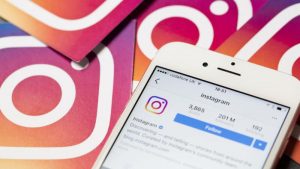
Congratulations! A new B2B product launch is an exciting time for any company — especially if this is your first one! We know the time and energy it takes to create a new product. The question you’re now faced with is how to launch a new B2B product and then create the buzz it deserves. Let’s look at how you can do just that with an effective B2B PR strategy focused on a product launch.
We have a great example in Steve Jobs, who put Apple on the map when it came to product launches. He pulled at every emotion in the book, and had us hanging on his every word. It wasn’t just about an innovative product — it was the whole experience that had us on the edge of our seats.
Now, don’t worry. You don’t have to clone yourself into Steve Jobs to generate excitement for your product launch. But what can you do to generate interest? Let’s look at the 10 key steps to a successful product launch. Read on to learn how to get people lining out the figurative door to grab your offer!
How to Launch a New B2B Product Successfully in 10 Easy Steps
1. Create a Must-Have Product
Don’t be too hasty to launch your product before it’s ready. It’s best to get it right the first time than to have to revamp it later. Take your time and make sure that it will thoroughly fit a need within your industry. You want the whole product experience to be seamless.
You want your customers to think, “I need that,” — not, “That would be nice to have.” The more that buyers see a product as a must-have, the more likely they will be to invest in it.
2. Engage Influencers Early On
We mean early. Before the product is even ready to demo, start the buzz around your special product. Engage influencers, thought leaders, and bloggers to pump up the conversation around your company’s soon-to-be-released product.
Don’t give them all the information about your product right away. You want to create buzz around the possibilities of this new product, in much the same way that tech bloggers hypothesize about what the next iPhone will do. This mystery and speculation entices your audience to keep their ear to the ground, and look out for more details.
This is where a good relationship with the press can comes into play. If you have not yet established a good rapport with journalists and bloggers in your industry, then now’s the time. Plan ahead, and while your product is still in the development stages, develop or beef up your media relationships so when you are ready to launch, you have receptive ears.
Timing is a major factor here. A warning: Have your product locked down before you involve the media. Imagine the problems that could arise if journalists report on a feature that you later decide to eliminate. You also don’t want the media to focus on the negatives, which can be the case until your product is buttoned up and ready.
3. Make It an Experience — Not Just an Event
A product launch should be an experience for everyone involved — but it doesn’t have to break the bank. Even on a tight budget, you can create an unforgettable launch experience for your audience. First, though, there are a number of factors to take into consideration when planning an event. For example:
- What is your goal — media coverage, brand awareness, sales boost, product distribution?
- Who will be your audience — the media or peers within your industry?
- Would it be best at a physical location or as a cyber event?
- Where is your audience located?
Then, give people an incentive to attend. This might be a first-hand experience with the product itself, or a product discount offered to attendees. Whoever your audience is, satisfy them with what they will consider real value. This may be in the form of a speech by a well-known influencer. You could also connect the event to a certain cause that pulls at people’s heartstrings.
Whoever may participate at the event, there should only be one person who unveils the new product: the CEO of the company. He or she should be front and center to generate excitement, field questions, and show the event’s importance.
4. Create Suspense
Secrecy fuels excitement — it’s a basic principle of human psychology. The more shrouded in secrecy your product is, the more likely people will want to learn about it. Draw on that anticipation by releasing as little detail as possible (just enough to keep people engaged) until the big reveal.
5. Make Your Campaigns User-Centric
Create value in the mind of your user. How does it benefit the user’s daily life? What features are designed for the user? What tasks will it make easier for the user? All of your campaigns and content should be focused on the user and his or her needs rather than an in-depth summary of the product’s specs.
6. Get the Timing Right
You can have the best and most innovative product, but if your launch timing is off, it could fall flatter than a pancake.
Avoid scheduling your product launch around conflicting events, such as holidays, major world events, or during another popular brand’s launch. Your product may even be season-dependent — for instance, you wouldn’t want to release your new business tax software at the end of April!
Any experienced product manager will tell you that an accurate launch calendar is crucial to a successful product launch. –Sonny Ganguly
7. Generate Excitement for the Product on Social Media
Social media is the perfect place to promote your upcoming product launch. Keep your audience engaged by progressively revealing details about your new product. While B2B companies traditionally use LinkedIn and Twitter for social campaigns, networks like Facebook and Instagram are great avenues to promote your product and its launch.
Social media is also a nice way to involve your customers in the creative process. Before your product is in the manufacturing stage, ask your audience what features they would like to see in a new product. It not only gives you insight into your customers’ needs, but also creates an emotional connection to your product.
8. Don’t Overcomplicate Things
While you may be mesmerized by every detail of your new product, chances are your customers won’t be. Technical jargon and detailed specs may drown your customer’s interest before it has a chance to grow.
When you first start to release the initial details of your product, don’t go overboard. Skip the jargon, and focus on the features that will readily benefit your customer. Keep it light and simple. A good test is to explain it to a family member who knows little about the industry — if their attention trails off, you know you’ve hit technical-overload territory.
9. Leverage Content in All Its Forms
Content is key to keeping your audience’s attention. Since people generally process visual information more easily than text-only content, strive for a balanced mix of content forms. You could create…
- Images
- Infographics
- Slideshares
- Videos
Don’t be afraid to embrace new forms of content. It could give you that extra boost you need, and a certain edge with some customers. Although still new, live streaming video on social networks has been an extremely effective tool for many B2B companies in spreading the excitement for upcoming product launches.
Social media users love to feel “in the moment,” and live videos give them that perspective.–Jayson Demers
10. Seize the Post-Launch Opportunity
What you do after launch can have just as much influence as the event itself. For everybody that was there during your launch, there are many others that weren’t able to attend. After the launch, you have a ripe opportunity to spread the product launch excitement even further.
Live stream the entire launch so that others can feel involved and view it after the fact. Create and share content (blog posts, video, and infographics) about your product or service and what was discussed at the launch. Don’t forget the power of user-generated content — encourage people to share their experience from the launch on social media, and then highlight those experiences in your own content.
Key Points to Remember…
- Create a “must-have” product, not a “it would be nice to have” product.
- Offer incentives at your product launch to make it a valuable experience for your audience.
- Leverage campaigns that are focused on the user experience rather than the product — and use social media to its fullest.
- Don’t forget to keep the excitement going during your post-launch period.
Business & Finance Articles on Business 2 Community
(112)








